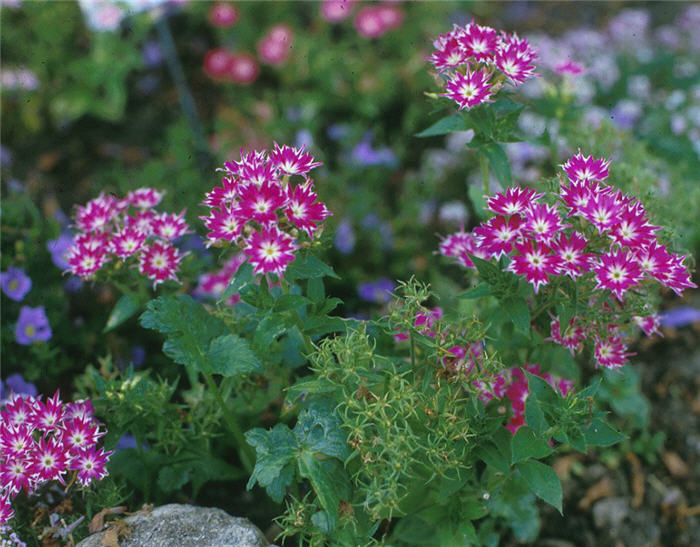| Botanical Name: Phlox drummondii | |
| Common Name: Annual Phlox |

-
Anatomy
-
Culture
-
Design
Plant Type
Annual
Height Range
Under 1'
Flower Color
Lavender, Pink, Red, Yellow, Violet, White
Flower Season
Spring, Summer
Leaf Color
Green
Bark Color
n/a
Fruit Color
n/a
Fruit Season
n/a
Sun
Full, Half
Water
Low, Medium
Growth Rate
Slow
Soil Type
Sandy, Clay, Loam
Soil Condition
Average, Well-drained, Dry
Soil pH
Neutral
Adverse Factors
n/a
Design Styles
English Cottage, Meadow, Ranch
Accenting Features
Showy Flowers
Seasonal Interest
Spring, Summer
Location Uses
Perennial Border, Raised Planter
Special Uses
Container, Naturalizing
Attracts Wildlife
Butterflies
Information by: Stephanie Duer
Photographer: Steve Jacobs
Photographer: Steve Jacobs
-
Description
-
Notes
Phlox drummondii is an annual phlox that is native to the grasslands of central and eastern Texas. It typically grows to 6 to 9 inches tall. It has fragrant, trumpet-shaped, rose-red flowers that appear in clusters typically from May to early July, though the plants decline significantly as the heat of summer sets in, so they may not bloom here that late into summer. Cultivars come in varying shades of pink, red, lavender, purple, buff, and white. Flowers often have a different colored eye. It might be a lovely choice to seed in with short grass meadows, along with flax and annual coreopsis.
Best grown in loose, medium moisture, well-drained soils in full sun to part shade. According to the Lady Bird Johnson Wildflower Center, it has a low water requirement, but that is probably when it is growing in soil, not a container. It does grow at the edges of woods, and so may appreciate part afternoon shade in our climate. Pinch main stems of young plants to stimulate branching. Deadhead spent flowers promptly to extend bloom.